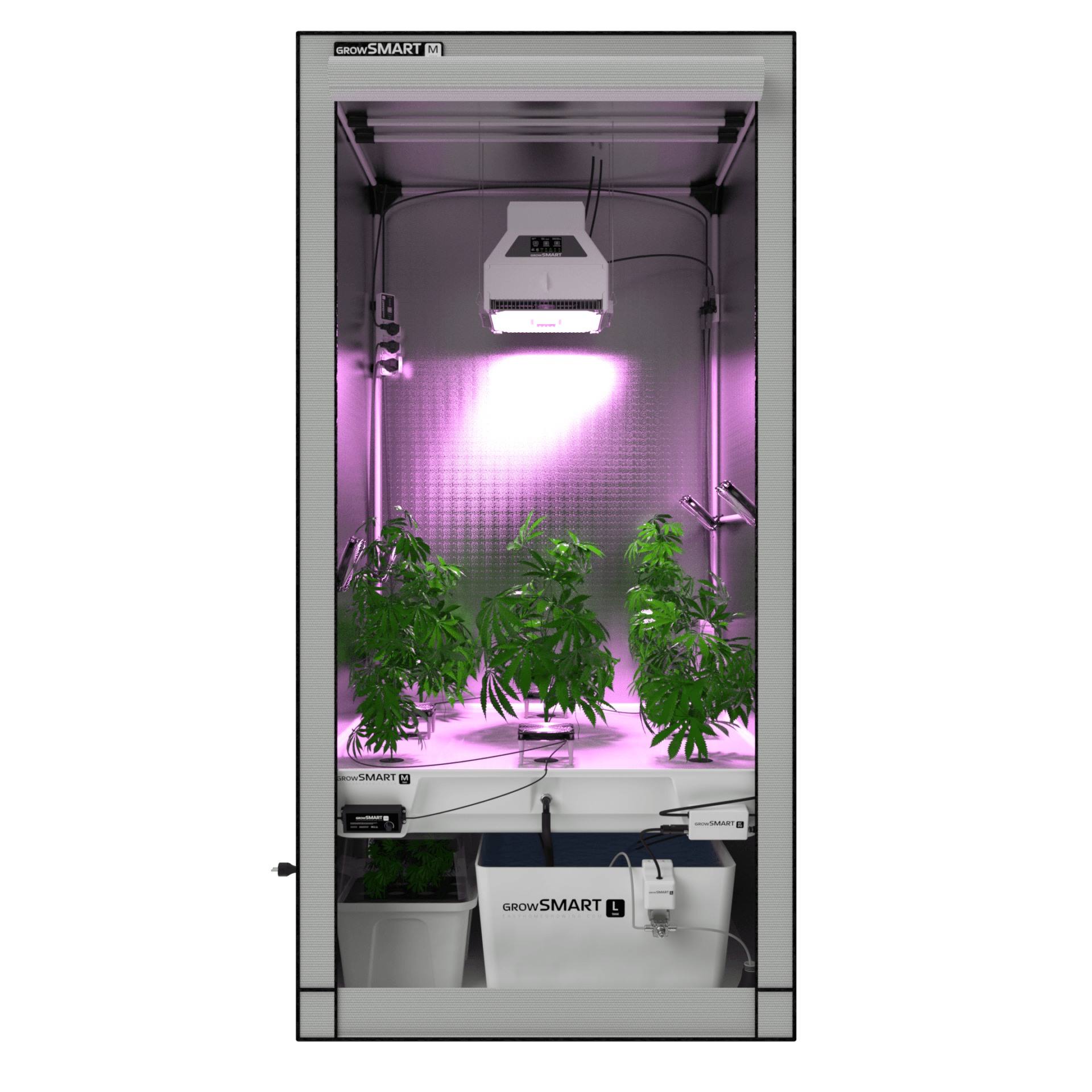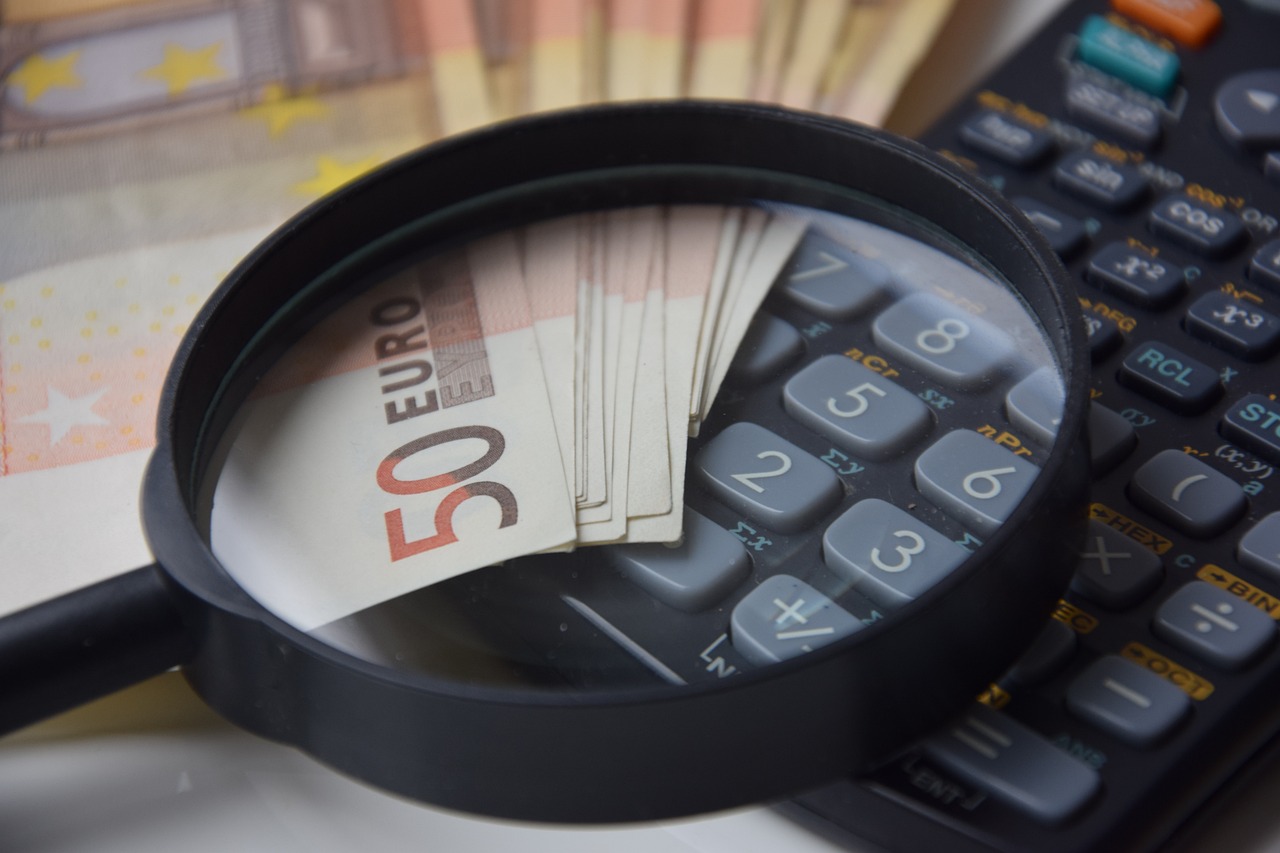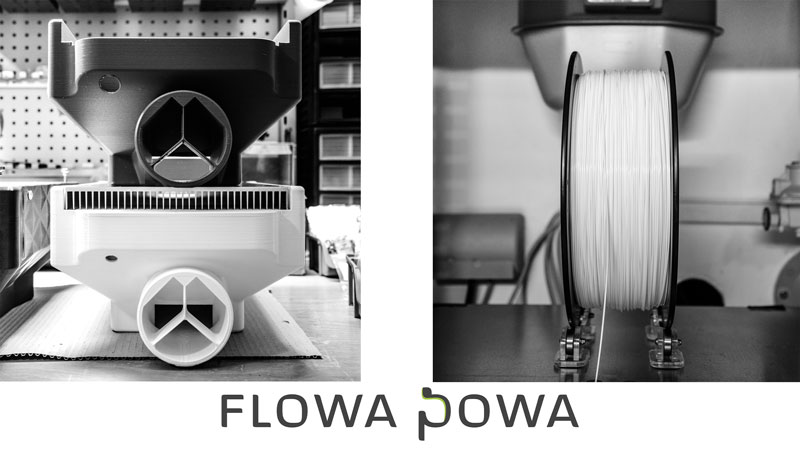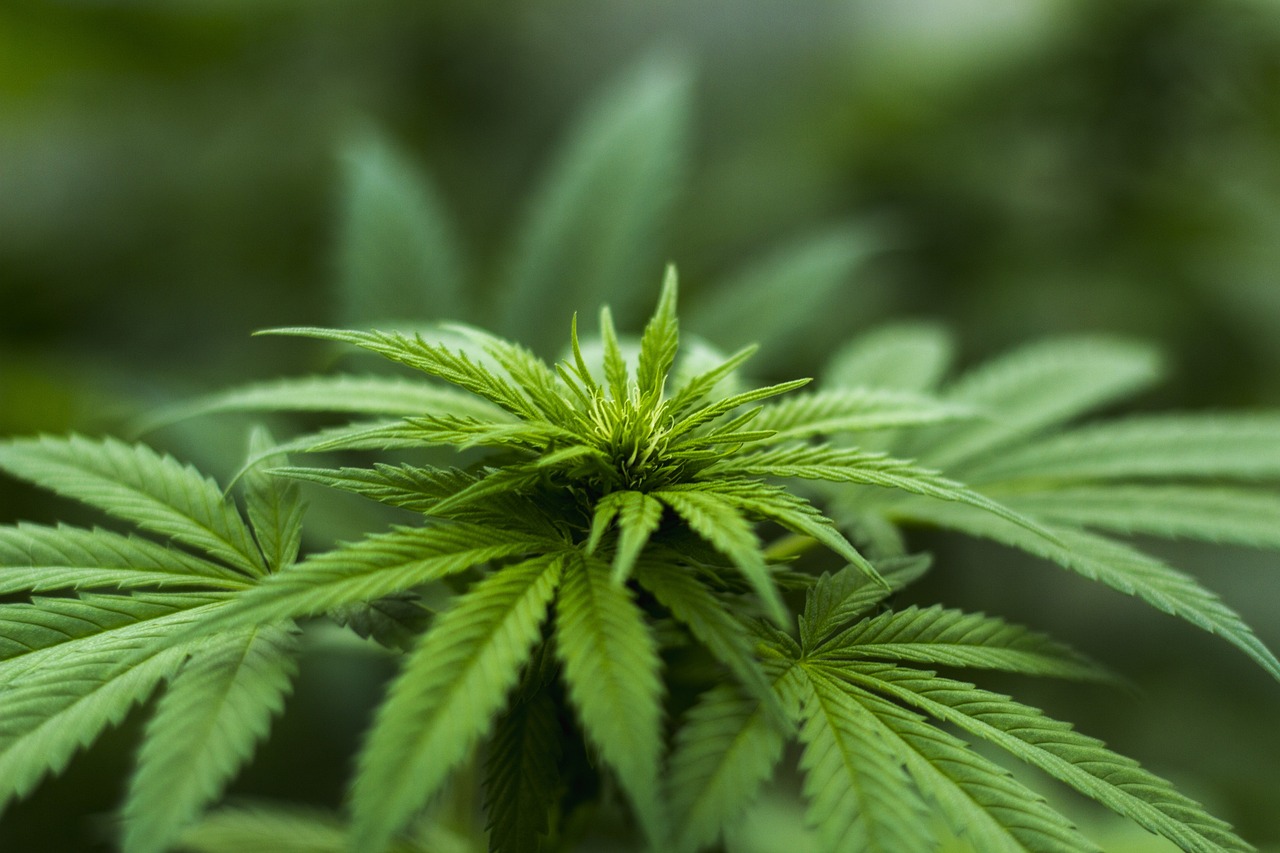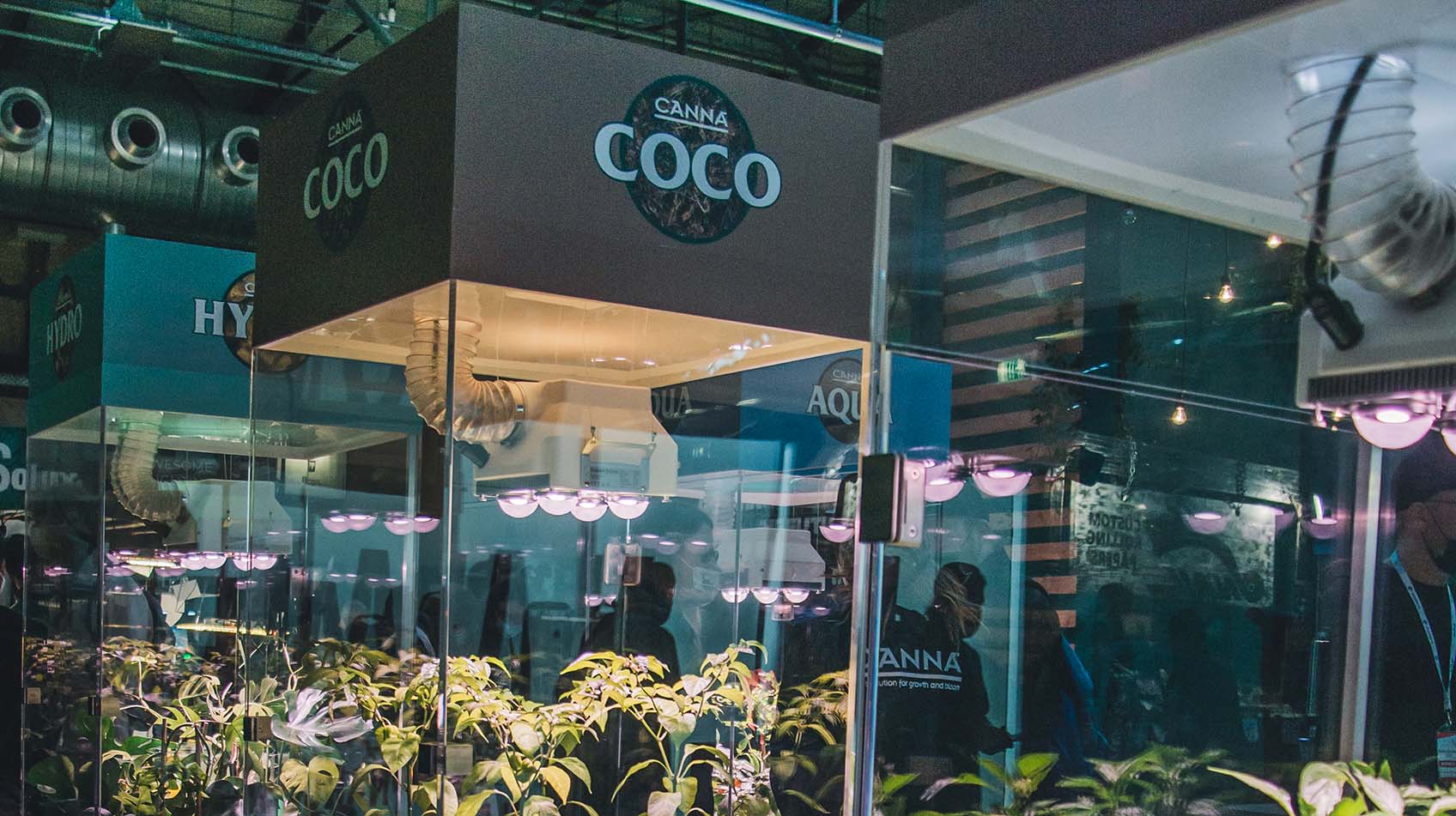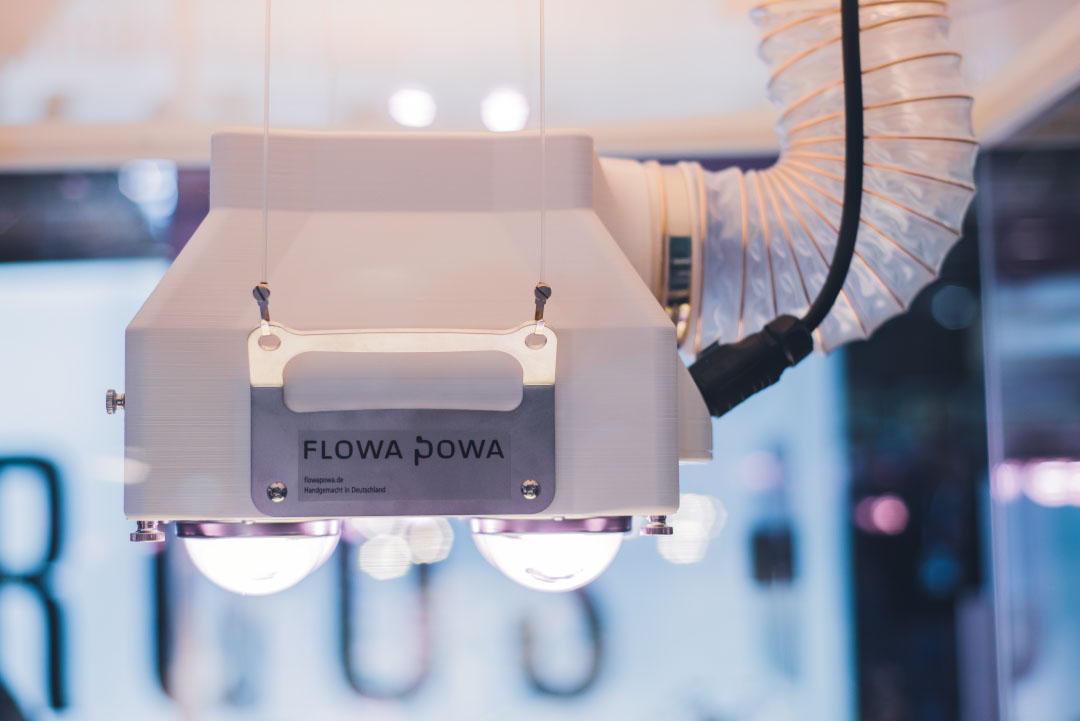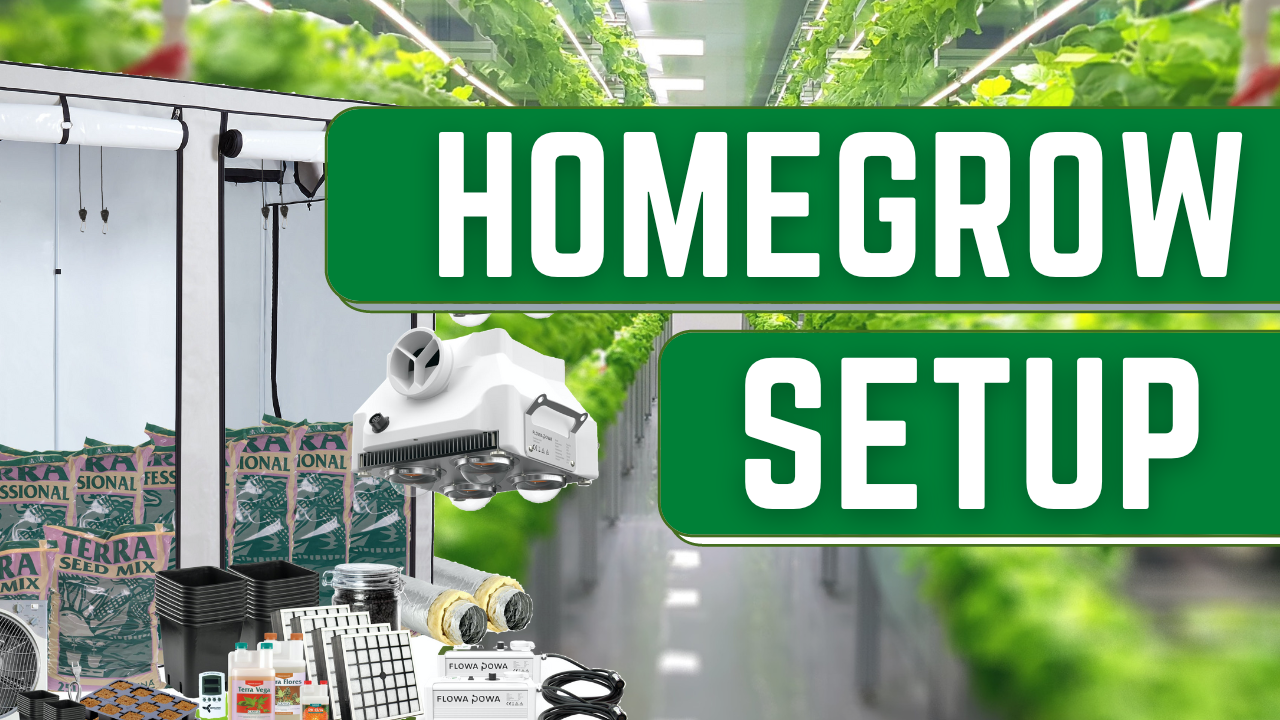The costs you need to consider for growing your own plants
Here you will learn:
There are many reasons to take the cultivation of your favourite plants into your own hands. Cannabis is still an illegal drug under the Narcotics Act in Germany, but this will change with the announced legalisation. Not only consumption and possession, but also cultivation will become legal in Germany. Those who then want to take their supply of cannabis flowers into their own hands will certainly ask themselves how much such a complete cultivation actually costs. There are big differences here, depending on various factors, which we will look at in this article. First, however, we want to look at the various reasons that motivate people to take their cultivation into their own hands.
Reading time: 10 minutes
Disclaimer: The following article is in no way intended to motivate people to grow cannabis in Germany. As an illegal drug, cannabis falls under the Narcotics Act in Germany. Thus, the cultivation of cannabis is also illegal in Germany and will be prosecuted. Please always inform yourself about the applicable laws and regulations in your country.
Long story short: the most important points in a quick run-through:
- It is not possible to make general statements about the exact costs of indoor growing, but guidelines and empirical values are helpful.
- The biggest cost centre is undoubtedly the equipment to be purchased.
- With all-in-one systems like the FlowaOne, power consumption and thus running costs can be reduced.
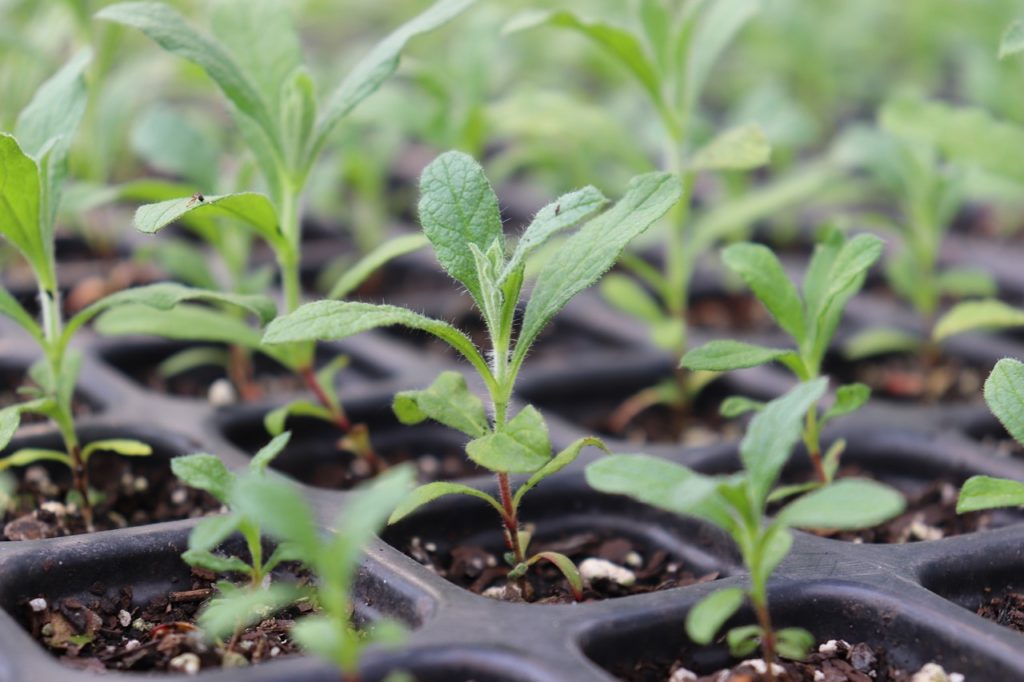
Reasons to manage your Grow yourself
In the course of the legalisation of cannabis in Germany, private cultivation is also to be permitted and regulated. Instead of being dependent on licensed shops, their suppliers or third parties in general, it will then be possible to take the cultivation of cannabis into one’s own hands. But why go to the trouble of investing a lot of money and time when it is so much easier? The reasons are manifold and certainly make sense in individual cases.
Connect with other growers on Telegram!
Medical reasons
Cannabis has also been recognised as medicine in Germany since 2017 and is used in various areas of application such as pain therapy, improving sleep quality and combating anxiety. Patients can obtain cannabis from licensed pharmacies that are controlled by the Federal Opium Agency.
Well thought, badly done?
Despite these advances, there are some problems. The availability of medical cannabis is often limited and it can be difficult to find a licensed dispensary nearby. The cost of treatment with cannabis as medicine is often not covered by health insurance, which is a high financial burden for many patients.
In addition, it can be difficult to obtain a doctor’s prescription for medical cannabis, as many doctors are not yet sufficiently informed about the medical use of cannabis or have concerns about its efficacy and safety.
Another problem in obtaining medical cannabis is the limited access to certain strains in pharmacies. Since everyone is unique and reacts differently to different substances, it is important for some patients to obtain the strain that is most medically effective for them.
Another important advantage of home cultivation is better quality control. For example, the quality of medicinal cannabis can vary depending on the batch and supplier, which can lead to uncertainty for patients. Home cultivation can ensure that the cannabis is free of harmful chemicals and impurities and has the desired active ingredient content.
Leisure consumption
If cannabis is legalised in Germany, those who like to consume their cannabis flowers in their free time and for pure enjoyment will be particularly pleased. Where they have been pushed into illegality so far, they will then no longer have to fear punishment.
A possible reason for growing cannabis oneself and not buying it in licensed shops may be that the supply of cannabis flowers in a region is limited. In addition, there are also people who want to take cannabis cultivation into their own hands out of interest in the plant and cultivation.
Another advantage of growing your own is the possibility to try out different strains and adapt them individually to achieve a better effect. There are also people who grow and resell cannabis for financial reasons. This is and will remain illegal even if cannabis is legalised in Germany and should only be mentioned here for the sake of completeness. We distance ourselves from any illegal activities that are not subject to the legal regulations of the respective country.
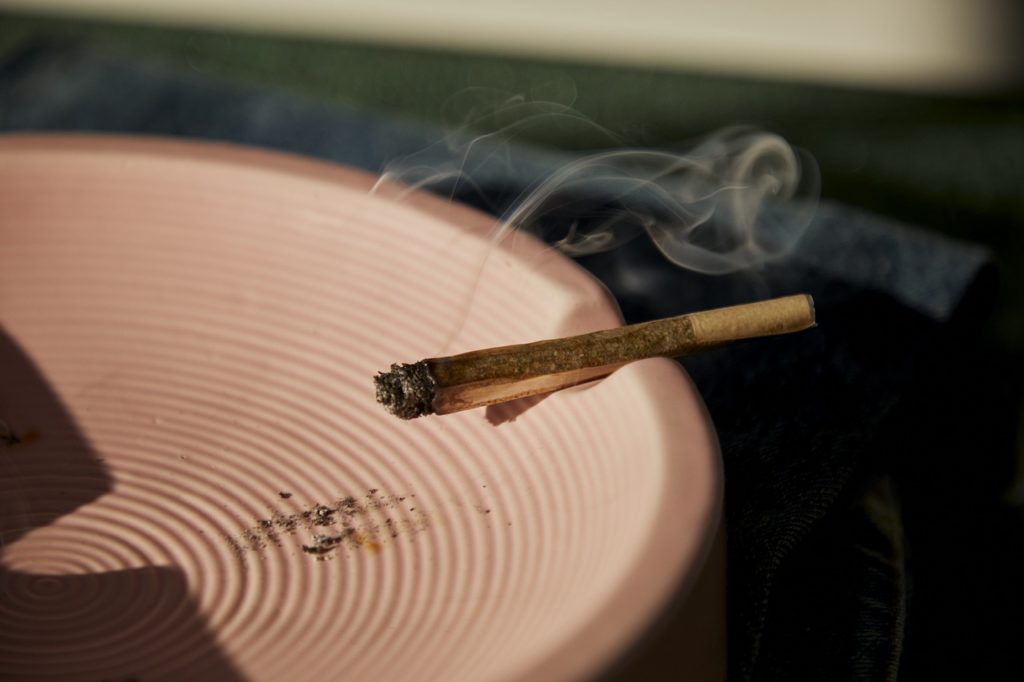
Saving costs
As already mentioned, the purchase of medical cannabis can be very expensive, especially if it is not covered by health insurance. But the question of cost is also relevant for recreational use. With legalisation and the planned alignment with the approximate street price of about 10 € per gram, regular use of cannabis in particular will continue to be a financial burden. In addition, the price per gram will most likely be higher due to the planned cannabis tax.
For this reason, self-cultivation of cannabis can be a cost-effective alternative. Although the initial costs for equipment and materials can be high, these can be amortised through the regular cultivation of cannabis plants.
That’s how much a complete grow costs
Now let’s move on to the costs. You want concrete figures? We try to give you some as best we can. As best we can, because blanket answers for individual cost centres are never possible. A grow is a complex and very individual matter. Everyone has different preferences and requirements for the equipment or the end product. Nevertheless, a small overview of the approximate costs of the individual cost centres should be given here.
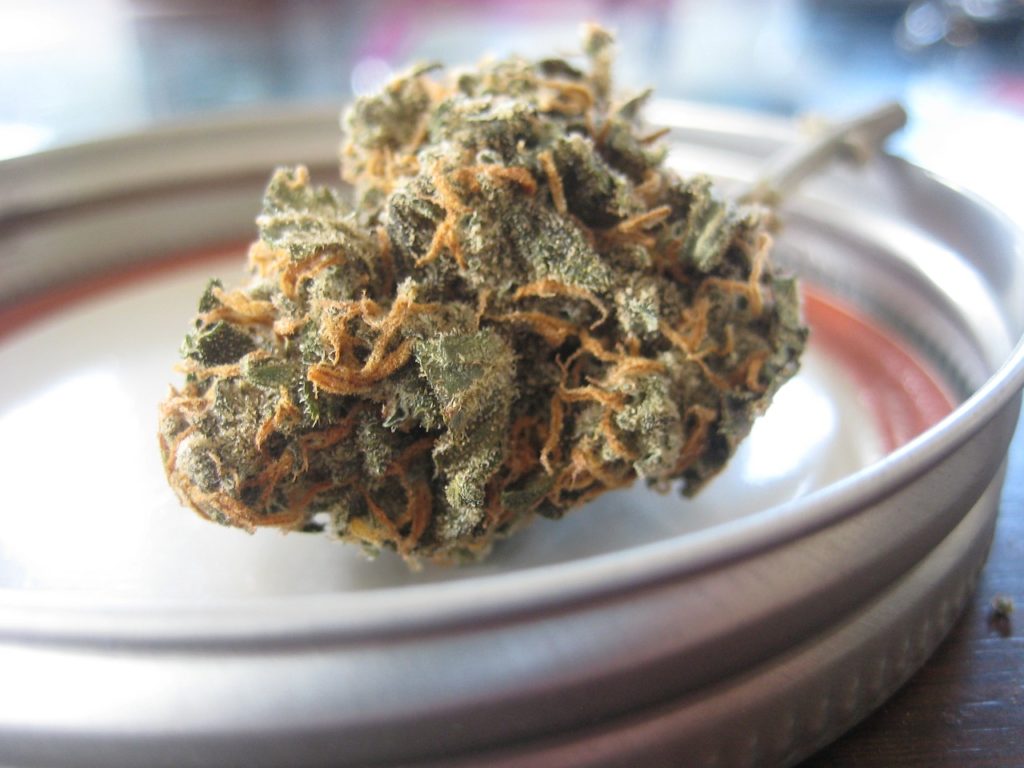
1) The equipment for a successful grow
One of the biggest costs is probably the equipment needed for the whole grow. Depending on how, where and with which equipment you start the grow, the costs can be very high. However, as described above, these will pay for themselves over time with regular use.
Indoor vs. Outdoor
First of all, a distinction must be made between indoor and outdoor cultivation. In indoor growing, the equipment required is generally more extensive and technological than in outdoor growing. Indoor growers are able to precisely control all variables such as light, temperature, air circulation and humidity.
Indoor growing requires an artificial light source as there is no direct sunlight. Usually, special grow lamps are used that cover the entire light spectrum and optimise plant growth, such as full-spectrum LEDs. In addition, an aeration system is needed in indoor systems to optimally regulate the growth climate of the plants. In addition, there are other devices such as activated carbon filters or timers.
In contrast, outdoor cultivation is less extensive. First and foremost, you need a suitable location with good soil and sufficient sunlight. Since you cannot influence the light cycles outdoors, the plants grow quite differently. In contrast to indoor cultivation, the plants grow much taller because they are in the vegetative phase for much longer. However, protection from the weather and animals is also necessary here, usually in the form of fences or tarpaulins.
Overall, however, indoor cultivation of cannabis is becoming increasingly popular. Above all, the influence of the individual variables and the associated full control over the entire system make this type of cultivation interesting for hobby gardeners. The costs incurred are distributed over the following cost centres.
Illumination systems
Since indoor growing uses artificial light sources, a good lighting system is a crucial factor for healthy and high-yielding plants. There are a variety of options and light sources on the market. The most common are LED, HPS and CFL lamps.
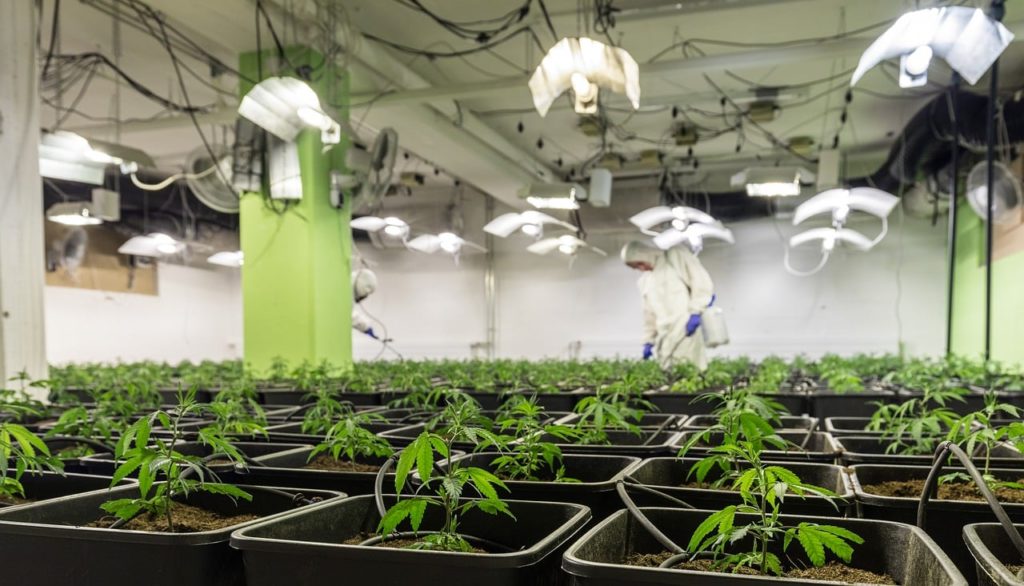
LED Growlights
LED lights are a popular choice for growing cannabis at home. They are energy-saving and have a long lifespan. Another advantage is that they produce less heat than other light sources. However, they can be more expensive than other plant lamps. The relatively high purchase price, however, becomes secondary compared to the efficiency and long life of LED grow lights. Full-spectrum LED lamps in particular are among the best growlights currently available on the market.
Costs: Between 100 and 300 euros for beginners and small grows/ from 400 euros for higher-quality LED lamps and larger grows
HPS Growlights
High-pressure sodium (HPS) lamps used to be the gold standard among grow lights and are still a popular choice for indoor cannabis cultivation. They are often cheaper than LED lamps, but consume more energy and generate more heat.
Costs: Between 30 and 80 euros for beginners and small grows/ from 100 euros for higher quality lamps and larger grows.
CFL Growlights
Another option for indoor cannabis cultivation are compact fluorescent lamps (CFL). They are cheap and easy to install. However, they are less efficient than other light sources.
Kosten: Zwischen 10 und 30 Euro pro Röhre
Aeration systems
Another important element of an indoor greenhouse is a well-functioning ventilation system. It regulates the growing climate, controls humidity and protects against overheating. It consists of several components that should be included in your cost calculation.
Exhaust fans and supply fans
Exhaust and supply air fans are an important part of this system. These extract the stale air and heat from the grow room and provide a fresh air supply. In return, fresh air is taken in from outside the room and fed into the grow room. This optimally regulates the growing climate and ensures a sufficient oxygen supply.
Costs: Between 50 and 300 euros
Odour filter
Cannabis is a strong-smelling plant. When it is legalised in Germany and thus cultivation is also possible within one’s own four walls, one does not want to immediately cover the entire stairwell with a cloud of scent. To reduce these odours, an carbon filter is usually used in combination with exhaust fans. The carbon filter is connected to the extract air fan and filters the odours out of the air before they are discharged from the room.
Costs: Between 50 and 100 euros/ from 150 euros for larger grows
Humidifier
Another important part of the ventilation system is a humidifier. This device helps to keep the humidity in the grow room at an optimal level.
Costs: Between 20 and 50 euros/ from 50 euros for larger grows
Irrigation systems
Besides light and ventilation, irrigation is a third important aspect that forms the basis for successful indoor growing. There are different irrigation methods that can be used depending on the size and type of greenhouse.
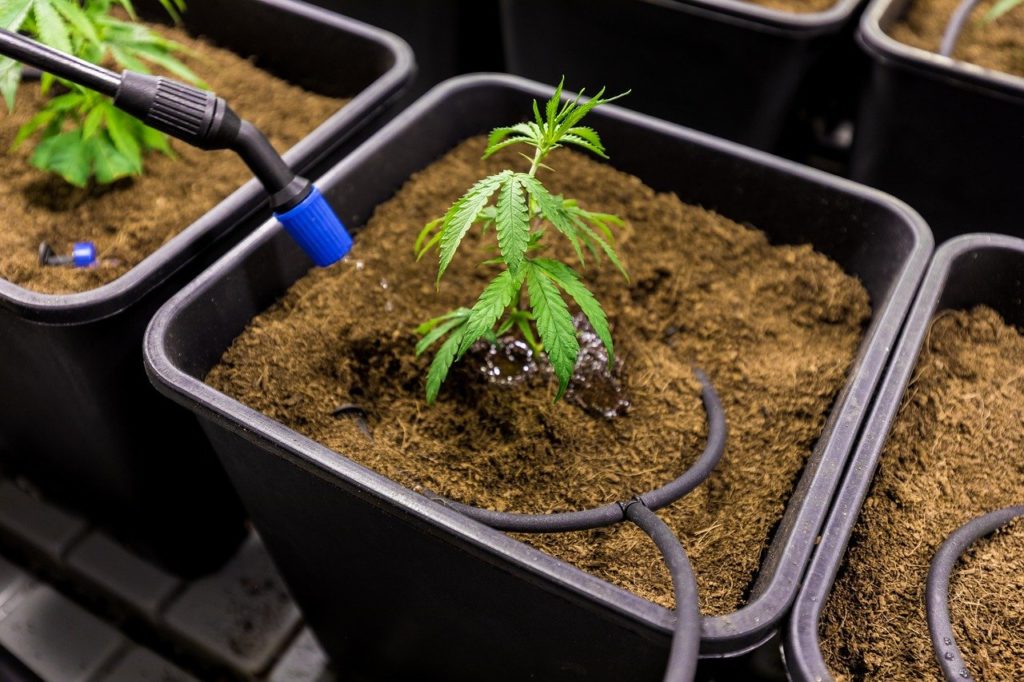
Manual irrigation
Manual watering is the simplest and most cost-effective method. Here, the water is poured directly onto the plants by hand using watering cans or similar.
Costs: Between 5 and 10 euros for casting utensils
Drip irrigation system
Drip irrigation is an automated method in which water is slowly and evenly released into the soil via drippers. This method ensures uniform moistening of the soil and avoids wasting water.
Costs: Between 30 and 100 euros for smaller grows/ from 100 euros for larger grows
Hydroculture
Another watering method is hydroponics. Here, the plants are cultivated in a medium made of rock wool or coconut fibres. Water and nutrients are supplied via a system of hoses and pipes that ensures an even distribution of water.
Costs: Between 50 and 200 euros for smaller system and few plants
Aeroponic irrigation
A somewhat more advanced variant of irrigation is the aeroponic planting system. Here, the plant roots hang in the air and are sprayed with water and nutrients via a fine nozzle.
Costs: Between 200 and 500 euros for smaller grows/ from 500 euro for larger grows
Fertiliser
To keep plants healthy and productive, an additional supply of nutrients is essential. Fertilisers are a practical solution for this. They can enrich the soil with important nutrients that are necessary for the growth and development of plants.
However, in order to save costs, one should not reach for the cheapest fertiliser. The quality of the fertiliser is crucial for the growth of your plants. Using poor quality fertiliser can lead to poor health and lower yields from your plants.
Costs: Between 10 and 50 euros per plant
Other equipment
There are also other materials that you can use for your indoor grow. These include pots, soil, pH meters or magnifying glasses and other small items. These are not as expensive as the equipment already mentioned.
However, keep in mind that you also need to include these small items in your price calculation.
2) Electricity costs
Unfortunately, it is difficult to give exact figures for the monthly electricity costs for an indoor grower, as they vary from case to case. There are several factors that influence the cost, such as the size of the growing area, the lighting, ventilation, irrigation and other equipment used. The price of electricity in the region and the number of operating hours of the equipment as well as its electricity consumption also have an impact on the monthly electricity costs.
On average, however, one can roughly estimate that the monthly electricity costs for a cultivation area of one square metre and lighting of about 600 watts are between 50 and 150 euros. However, for larger cultivation areas and equipment with higher power consumption, the costs can be significantly higher.
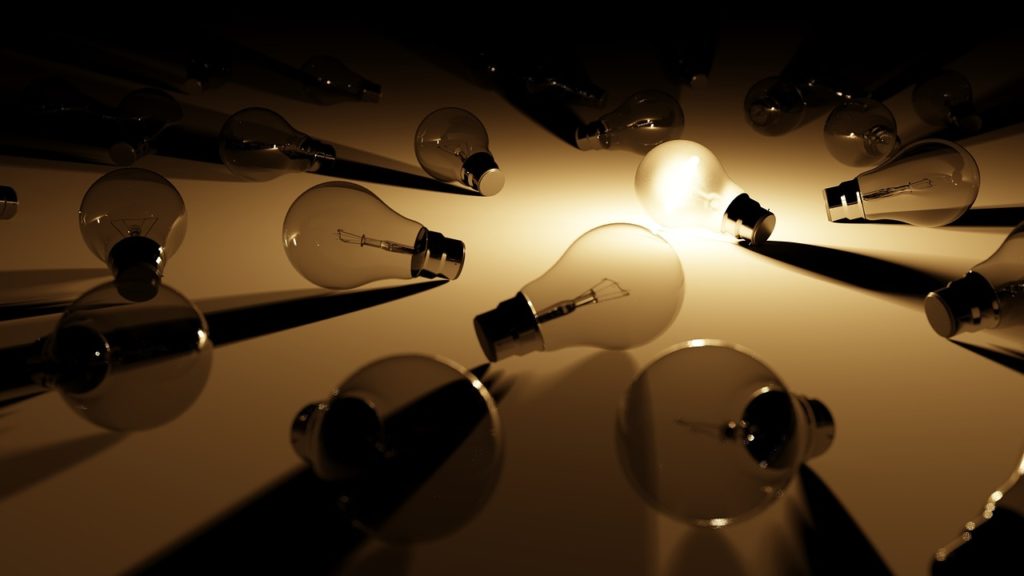
Saving costs with the FlowaOne
The FlowaOne helps to reduce electricity consumption and thus overall costs. On average, the daily electricity costs of the FlowaOne are one euro. How do we arrive at these figures? Our All in One system has a maximum output of 330 watts. On average, we are at about 165 watts, because (depending on the growth phase) we never need the full power. With 14 hours of operation under 165 watts and an electricity price of 45 cents/kWh, you come to daily electricity costs of 1.04 euros.
In addition, the FlowaOne combines several systems in one. It not only offers you a highly efficient full-spectrum LED grow light, but also a high-quality ventilation system with fan and activated carbon filter.
The fan power is only 10 watts. The remaining 220 watts of the maximum power consumption are accounted for by the full-spectrum LED grow light. In comparison, separate fans have a power consumption of 50 to several 100 watts, which is then added to the lighting system.
3) Water costs
It is difficult to make a general estimate of water consumption for an indoor grow, as it depends heavily on the number of plants to be watered. However, regular watering is essential for healthy plant growth. The watering method and the current growth phase of the plant play a role.
As a rule, however, water costs are relatively low in indoor growing. So you don’t have to worry about a high water bill, unless you want to rent and irrigate a whole hall right away.
It is important to note that some growers prefer more expensive branded water such as Volvic due to the hardness of the water. If you choose branded water, the monthly water costs will obviously be much higher.
4) Workload
The effort required for indoor cultivation is usually very high and includes not only watering, repotting and installing the plant, but also research and information. Especially at the beginning and at the end of the process, the effort is the highest. At the beginning, preparations have to be made, plans drawn up, the necessary equipment procured and the plant set up. At the end of the process, the plants have to be harvested, dried, fermented and stored.
During the growing process, the effort decreases somewhat as one understands the process better and better and internalises routines. Nevertheless, indoor growing is not something you do “on the side”. The plants always need someone to look after them. A holiday of several days in between without someone looking after the grow is therefore not just possible.
Conclusion
Successful indoor growing is not an easy undertaking and is certainly different from growing normal houseplants – at least if you want to grow as high-yielding as possible. Costs vary depending on the method and size of the grow. The biggest item is probably the purchase cost of the equipment. When buying equipment, it is worthwhile to look for quality and energy-efficient devices in order to keep the lifespan and yield high and the power consumption of the system as low as possible. All-in-one systems like the FlowaOne are a good solution. Not only do you combine several systems in one and thus save space and nerves, but also the power consumption is at a very low level due to the efficient technology, which amortises the somewhat higher purchase price over time of growth.
